This developed functional prototype is constructed with a minimal CNC-routered circular base and acrylic protrusions to function as hands: the largest central hand is the hour, the mid-size hand is the minute and the smallest is the second. Mechanical clock components were fabricated from laser cut acrylic and 3D printed gears. All three hands are individually driven with an Arduino microcontroller, allowing their movement to be re-programmed for changing speed and purpose. For example the central hand could become the second or minute hand.
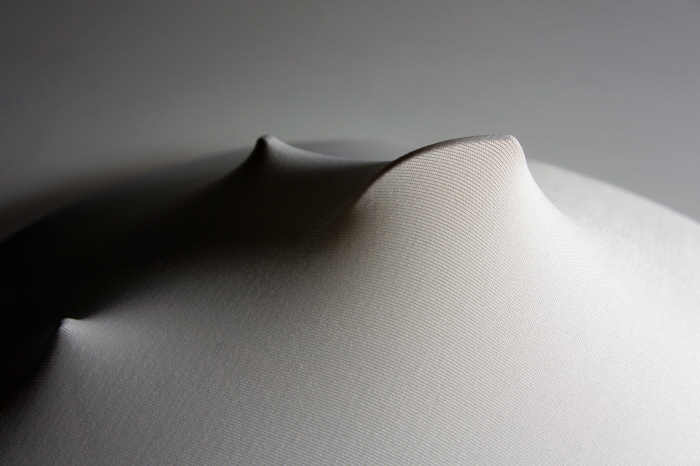
The entire product is encased with a highly elastic lycra blend fabric which allows the surface form to change smoothly. Twelve seams in the fabric wrap it around the bottom of the base, aligned with each hour to provide an additional layer of haptic time indication.
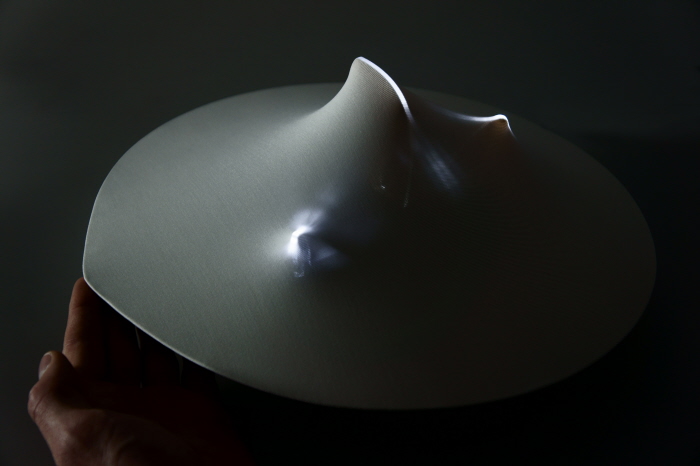
Each hand of the clock has an embedded LED to provide time indication in the dark. The lights are activated by touching a conductive thread seam that runs down the underside of the noon mark on the base of the clock: one touch to turn the lights on and one to turn them off.

Lights on in complete darkness.

Twenty second exposure photo of clock lights in motion.
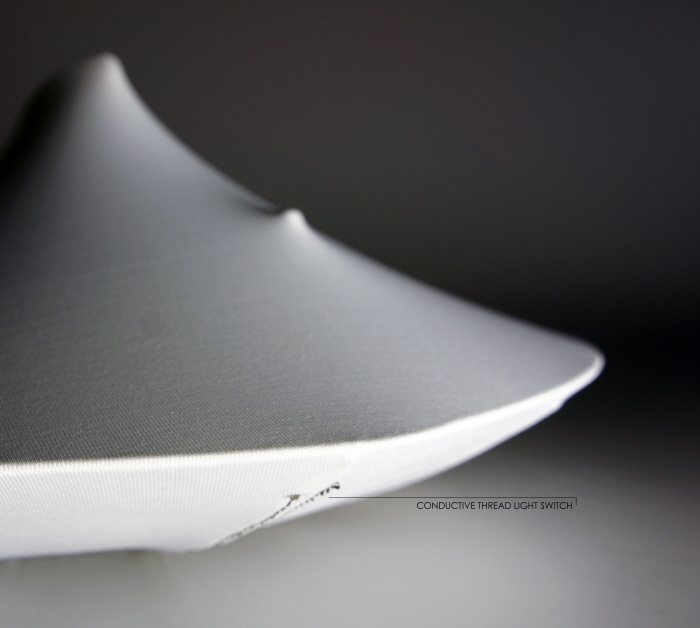
Conductive thread light switch on underside of the base located at noon mark.
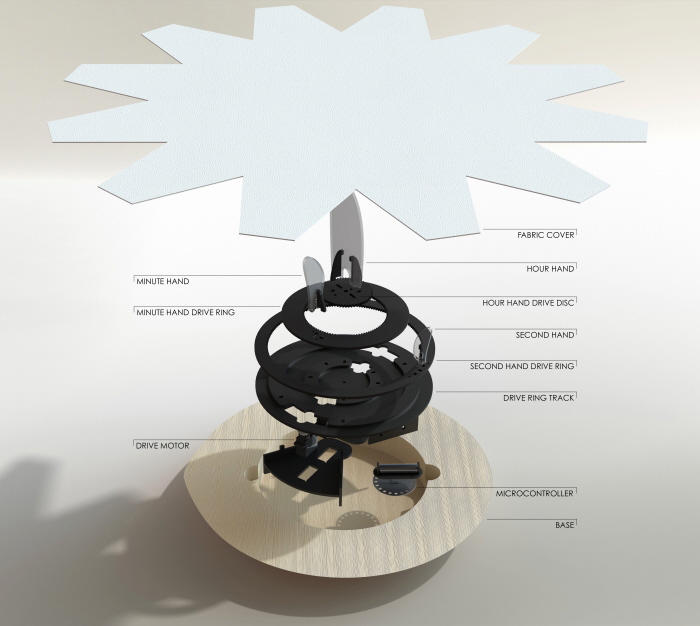
Solidworks render of complete exploded assembly.
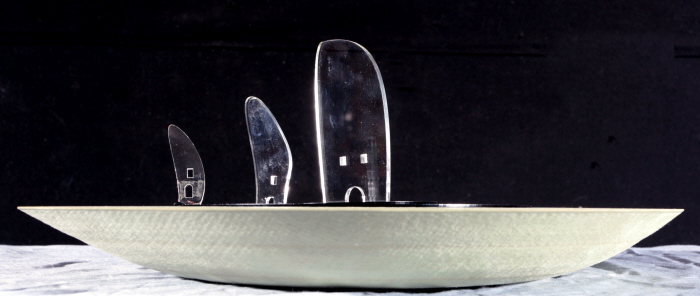
Clock with the fabric cover removed.
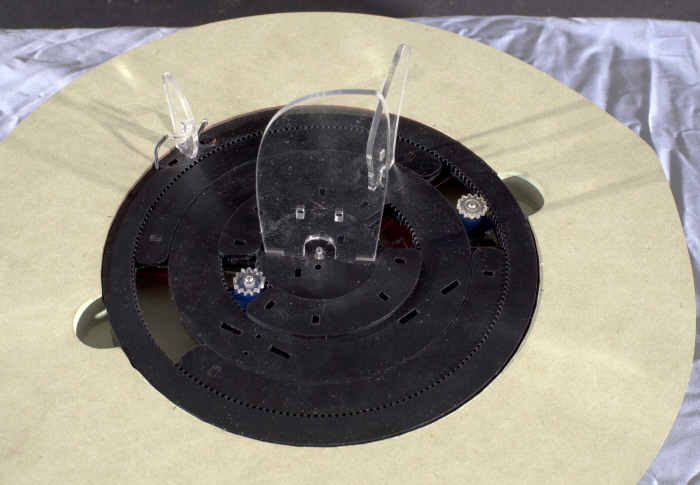
Each clear acrylic hand of the clock is attached to separate rings driven by individual motors.
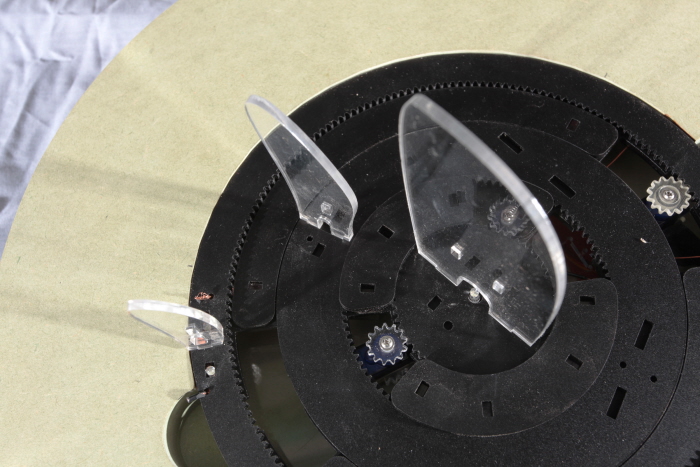
As each motor is controlled individually by an arduino microcontroller, their speeds can be re-programmed for switching functions: the central hour hand can become the second hand, etc.
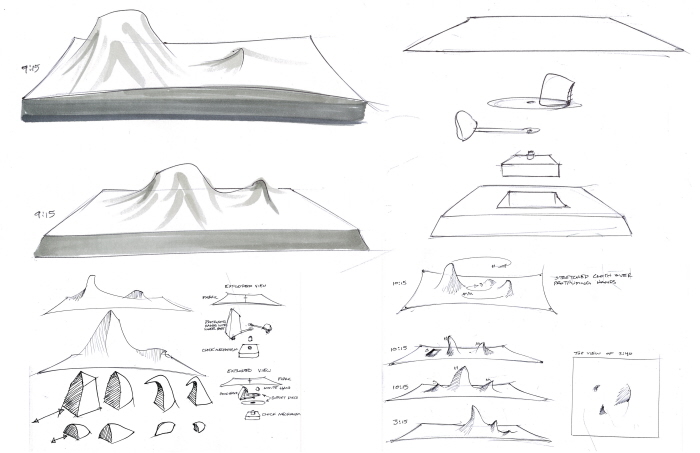
Development sketches of tactile fabric clock concept.
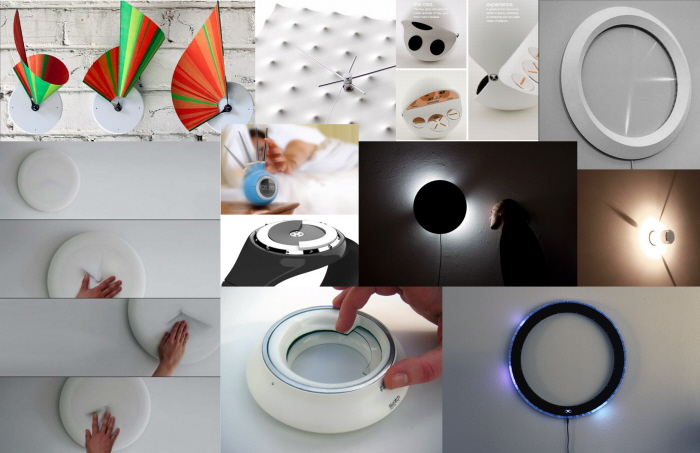
Web images: research of tactile and alternative time pieces.
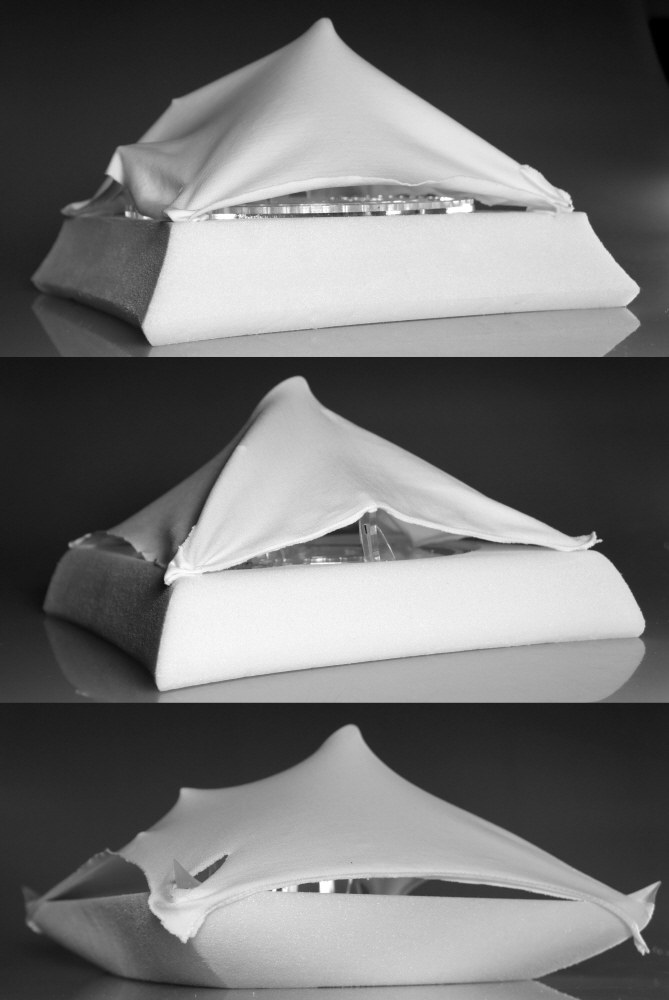
Initial clock base form studies fabricated with foam cut by CNC router.
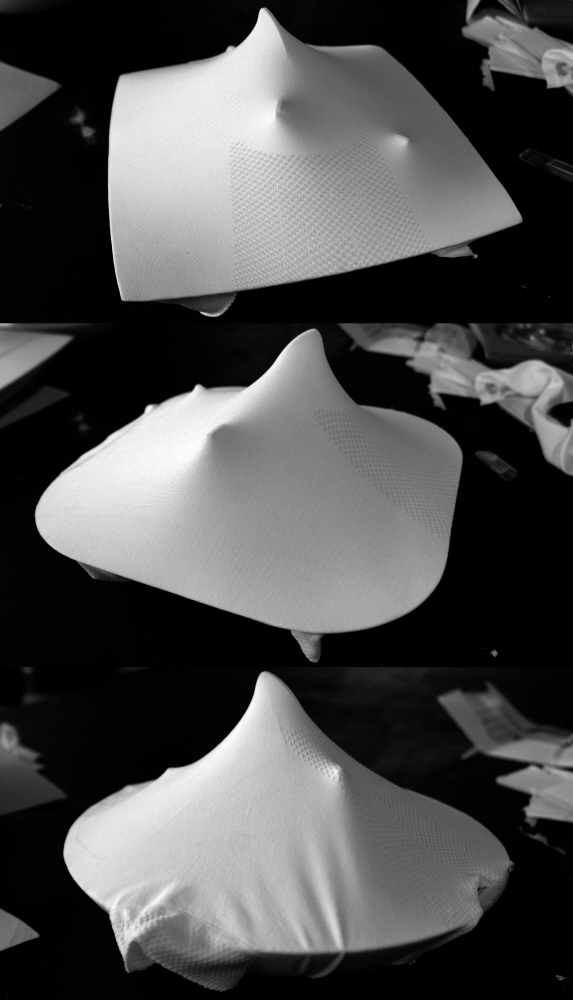
Developments of clock base form were also fabricated with foam cut by a CNC router. I found that the simple circular bowl form worked best and kept focus of the overall form of the clock on the fabric around the hands, the most important feature of the clock.
Form study of the noon mark indication at the edge of the base. In the end this small protrusion on the base edge developed to be bigger and smoother to make it easier to find and more pleasing to the touch.
gLike